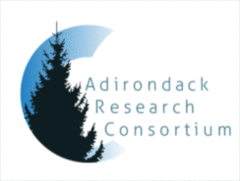Abstract
Paired soil and sediment samples were collected along a transect across northern New York from Lake Ontario to the Tug Hill Plateau to Indian Lake in the Central Adirondack Mountains. The samples were analyzed for four classes of compounds including polychlorinated biphenyl.s, polyaromatic hydrocarbons, select chlorinated pesticides, and inorganic elements and metals with different origins, usage history, and chemical properties. In general, the concentrations of these contaminants were higher in soil than sediment but relatively low compared to other more developed areas, consistent with the remoteness of the Adirondack region and limited permanent population. Trends in the data suggest that the concentrations of contaminants, particularly high molecular weight organic compounds, are generally greater closer to Lake Ontario. The reason(s) for this remain unclear, but are likely related to the large amounts of lake-effect precipitation the Tug Hill area receives and scavenging of contaminants by rain and snow. Levels reported for contaminants investigated in this study are generally lower than those reported elsewhere in the United States, and likely reflect the low population density of the region and less intensive !and use.
Recommended Citation
Chiarenzelli, Jeffrey; Pagano, J.; Milligan, M.; Holsen, T.; Glovak, J.; and Althouse, K.
(2006)
"Contaminant Concentrations in Adirondack Soil and Sediment,"
Adirondack Journal of Environmental Studies: Vol. 13:
No.
2, Article 8.
Available at:
https://digitalworks.union.edu/ajes/vol13/iss2/8




